Short Fiction Review #21: Love in Infant Monkeys
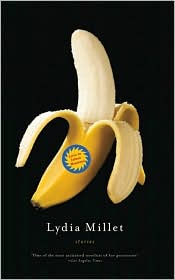 While her work sometimes hints at the fantastic, Lydia Millet isn’t strictly speaking a fantasy writer, certainly not in the sense of questing elves or weird alternate universes, and certainly not as evidenced in her new short story collection, Love in Infant Monkeys. Yet Millet’s work is frequently mentioned in genre venues; indeed, one of the stories collected here, “Thomas Edison and Vasil Golakov,” (in which the famed inventor of light bulbs and power generation attains metaphysical illumination by continually re-running a film of a circus elephant’s seemingly Christ-like electrocution)previously appeared in Tin House Magazine’s Fantastic Women issue. I think this might be because her depiction of human relations is satirically weird, even though in these days of reality television and talk shows, that’s pretty much standard fare. As Tom Lehrer once lamented, it’s hard to make fun of something that is already so patently absurd.
While her work sometimes hints at the fantastic, Lydia Millet isn’t strictly speaking a fantasy writer, certainly not in the sense of questing elves or weird alternate universes, and certainly not as evidenced in her new short story collection, Love in Infant Monkeys. Yet Millet’s work is frequently mentioned in genre venues; indeed, one of the stories collected here, “Thomas Edison and Vasil Golakov,” (in which the famed inventor of light bulbs and power generation attains metaphysical illumination by continually re-running a film of a circus elephant’s seemingly Christ-like electrocution)previously appeared in Tin House Magazine’s Fantastic Women issue. I think this might be because her depiction of human relations is satirically weird, even though in these days of reality television and talk shows, that’s pretty much standard fare. As Tom Lehrer once lamented, it’s hard to make fun of something that is already so patently absurd.
Millet, however, takes the actual absurd and elevates it to a higher level of preposterousness, in the process depicting how humans in observing, caging, exploiting or otherwise interacting with undomesticated animals illustrate how evolution may be working backwards on the so-called higher species. Specifically, she extrapolates real-life occurrences between animals and real celebrities and other well-known historical figures to illustrate human instincts for cruelty, self-centerness or just plain indifference, both to other species as well as their own.
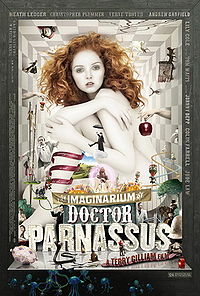 Very much looking forward to
Very much looking forward to 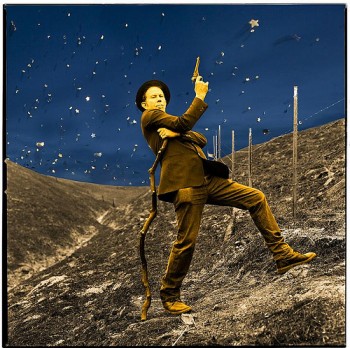
 In the mail today, just in time for Halloween, is the blood-spattered graphic of the October/November
In the mail today, just in time for Halloween, is the blood-spattered graphic of the October/November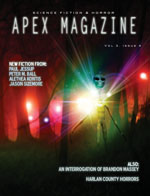 cover of Black Static magazine, the horror and dark fantasy counterpart that alternates monthly appearances with Interzone science fiction published by the folks at
cover of Black Static magazine, the horror and dark fantasy counterpart that alternates monthly appearances with Interzone science fiction published by the folks at 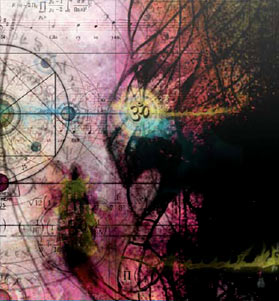 For this edition of my irregular review of the latest (more or less) short fiction, I thought I’d try something a little different. Usually I try to focus on the stories that worked the most for me, with maybe some attention on those that didn’t and why; at the same time, I also try to convey a flavor of everything else, if only just to alert you that an author is in the publication without, for any number of reasons, wanting to get into discussing the story to any great length. Note the use of the word “try.” One of the challenges here is to provide some substantive, possibly even useful, discussion to an audience that I’m assuming hasn’t already read the material. As
For this edition of my irregular review of the latest (more or less) short fiction, I thought I’d try something a little different. Usually I try to focus on the stories that worked the most for me, with maybe some attention on those that didn’t and why; at the same time, I also try to convey a flavor of everything else, if only just to alert you that an author is in the publication without, for any number of reasons, wanting to get into discussing the story to any great length. Note the use of the word “try.” One of the challenges here is to provide some substantive, possibly even useful, discussion to an audience that I’m assuming hasn’t already read the material. As 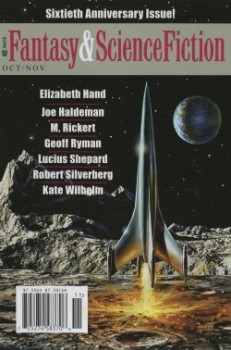 Fans of Tom Waits are often divided into two camps: those who favor the early boozy Kerouac, be-bop inspired crooner of life’s derelicts and losers up until he transmogrified beginning with the “Heartattack and Vine” album and “crossed over” into Kurt Weill cacaphonous orator of the absurd; fans of the later period sometimes disdain the earlier, and vice versa, despite the obvious connections. Me, I’m in the third camp as a huge admirer of both milieus. (I suppose there’s a further quarter of people who can’t stand Waits at all, but, much like the folks who still tiresomely maintain Dylan hasn’t done anything since his protest days, aren’t worth serious attention.)
Fans of Tom Waits are often divided into two camps: those who favor the early boozy Kerouac, be-bop inspired crooner of life’s derelicts and losers up until he transmogrified beginning with the “Heartattack and Vine” album and “crossed over” into Kurt Weill cacaphonous orator of the absurd; fans of the later period sometimes disdain the earlier, and vice versa, despite the obvious connections. Me, I’m in the third camp as a huge admirer of both milieus. (I suppose there’s a further quarter of people who can’t stand Waits at all, but, much like the folks who still tiresomely maintain Dylan hasn’t done anything since his protest days, aren’t worth serious attention.) The much anticipated — and feared — “reimagining” of Patrick McGoohan’s classic cult TV series The Prisoner is scheduled for release on AMC in November. One good sign is that Ian McKellen is cast as Number Two (a role which, unlike the original series, will not revolve among multiple actors) and is (like the original) of fixed duration. James Caviezal is Number 6 and there are some interesting parallels here. Caviezal played Jesus in Mel Gibson’s (who was rumored to be a candidate for Number 6 in the various movie proposals over the year) The Passion of the Christ, controversial for its brutal, some would say sado-masochistic, portrayal of the Gospel stories. Like McGoohan, Caviezal is an observant Cathloic. Caviezal has made public stands on such issues as stem cell research and it is not inconceivable this might have affected his career in an industry that for the most part tilts left; McGoohan reportedly turned down the role of James Bond for moral reasons and insisted in his contract that he would not kiss women on-screen, particularly ironic given that The Prisoner was embraced by the sexual liberation advocates of the Sixties counter-culture for the program’s non-conformist ethos.
The much anticipated — and feared — “reimagining” of Patrick McGoohan’s classic cult TV series The Prisoner is scheduled for release on AMC in November. One good sign is that Ian McKellen is cast as Number Two (a role which, unlike the original series, will not revolve among multiple actors) and is (like the original) of fixed duration. James Caviezal is Number 6 and there are some interesting parallels here. Caviezal played Jesus in Mel Gibson’s (who was rumored to be a candidate for Number 6 in the various movie proposals over the year) The Passion of the Christ, controversial for its brutal, some would say sado-masochistic, portrayal of the Gospel stories. Like McGoohan, Caviezal is an observant Cathloic. Caviezal has made public stands on such issues as stem cell research and it is not inconceivable this might have affected his career in an industry that for the most part tilts left; McGoohan reportedly turned down the role of James Bond for moral reasons and insisted in his contract that he would not kiss women on-screen, particularly ironic given that The Prisoner was embraced by the sexual liberation advocates of the Sixties counter-culture for the program’s non-conformist ethos.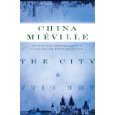 Intriguing premise — and something quite different from his previous work, which is always good to see in a favorite novelist — where two presumably East European cities somehow physically co-exist, with the inhabitants following strict protocols to avoid one another whenever their separate realities intersect. Grossman would be happy that it has compelling plotting; however, as a “police procedural,” Miéville doesn’t quite play fair. Part of the game in these kind of things is to at least give the reader a chance of figuring out the mystery of “whodunnit,” which I doubt anyone would be able to, although I’m guessing this isn’t Miéville’s concern here. I think he’s aiming at something more metaphorical along the lines of the existential spaces we all tread among the various realms of social interaction. Nonetheless, the unfolding of the mystery struck me as a little forced. Potentially, this could be the start of a series.
Intriguing premise — and something quite different from his previous work, which is always good to see in a favorite novelist — where two presumably East European cities somehow physically co-exist, with the inhabitants following strict protocols to avoid one another whenever their separate realities intersect. Grossman would be happy that it has compelling plotting; however, as a “police procedural,” Miéville doesn’t quite play fair. Part of the game in these kind of things is to at least give the reader a chance of figuring out the mystery of “whodunnit,” which I doubt anyone would be able to, although I’m guessing this isn’t Miéville’s concern here. I think he’s aiming at something more metaphorical along the lines of the existential spaces we all tread among the various realms of social interaction. Nonetheless, the unfolding of the mystery struck me as a little forced. Potentially, this could be the start of a series.